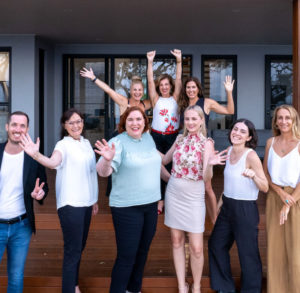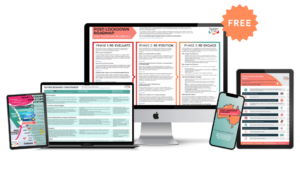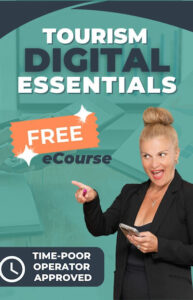To be able to streamline your operations processes, deliver memorable customer experiences and grow your sales, you first need to understand what prompts your customers to engage with you in the first place and what the purchase process is like from their perspective. This is called the customer journey.
It’s important to know what your customers need at each stage of the journey so that you can pre-emptively provide it to them. A customer journey messaging template can help you do that.
The messaging template works as a guide for you and your team to communicate effectively with your customers at every stage of the purchase cycle and will improve their experience and help them move forward to the next stage.
What does your customer journey look like?
A customer journey is the steps that your customers take from the moment they first identify a need that your product or service can fill, all the way through receiving the product or service and reflecting on their experience.
It’s important to remember that the customer journey isn’t always linear. There are many variations and alternative directions in which your customers might turn depending on their pain points, your competitors, your communications and so on. In an ideal world, the customer journey would work
Below we have outlined a basic customer journey and provided examples for each stage. This is a great starting point for most businesses to begin working out their customer journey, bearing in mind that they should consider alternative pathways that might direct a customer’s behaviour in this process.
Phase 1 = Identify problem
Let’s start right at the beginning. Before someone jumps onto Google to find a specific service provider or product, they first must identify their own need or desire for said service/product. This is referred to as the problem and your offering is the solution.
Examples:
- “I want to see the new Marvel movie.”
- “I need a holiday.”
- “My fridge is broken.”
Goals for this phase:
- Get your product/service in front of them by having an established and searchable online presence (including good SEO, a Google Business Profile, Facebook and Instagram presence).
- Have a clear Unique Selling Proposition that sets you apart from your competition.
Messages:
- “We understand your problem and have created a tried and tested solution for you.”
- “This is what makes our business unique and perfect for you.”
Phase 2 = Research
Now that your customer knows what they need, they need to decide who to get it from. At this stage they’re going to start searching online through search engines like Google, on social media platforms, Facebook groups and asking people they know for recommendations.
Examples:
- “Which movie theatres near me are showing the new marvel movie and at what time?”
- “Where should I go on holiday? What kind of accommodation do I want? What activities will I do?”
- “Where can I buy a new fridge and how can I dispose of the old one?”
Goals for this phase:
- Make your website as easy to navigate as possible
- Make your pricing transparent and answer any FAQs on your website
- Be available to chat with customers to answer any questions they may have
- Ensure your online reputation represents your business well
- Ensure your social media presence is inspiring, engaging and helpful
Messages:
- “To ensure the decision-making process is as easy as possible for you, we’ve provided detailed information about our products and services on our website.”
- “We’re available to chat with you about our offering and answer any questions you may have via live chat, email or phone call.”
- “Don’t take our word for it, see some customer testimonials here.”
Phase 3 = Decide
Your customer has assessed their options and decided that they want what you’re offering. You’ve won them over and they decide to buy from you. Hooray!
But the work is not over. At this stage, you need to ensure the buying/booking process is as simple as possible. According to Baymard Institute, roughly 68% of online shopping carts are abandoned before the customer commits to a purchase. There are lots of reasons that customers might abandon ship at this stage, so consider what the process is like for your business.
This is also the phase where you can provide additional post-purchase information that your customer is likely to want to know, such as shipping information, a cancellation policy, etc.
Examples:
- “I’ll buy two movie tickets for me and my friend at 7pm.”
- “I’ll go to Kangaroo Island for the Easter long weekend.”
- “I’ll buy this new Westinghouse fridge from Fridges4U who will take away the broken one and take it to the whitegoods recycling centre.”
Goals for this phase:
- Ensure your booking/sales process is as simple as possible to ensure the customer doesn’t get frustrated and turn elsewhere
- Provide swift confirmation after the sale is finalised about the next steps to pre-empt as many questions as possible
- Provide opportunities to enhance the experience with add-on purchases
- Be available to chat with customers to answer any questions they may have
Messages:
- “Thanks for [your purchase/booking with us]! Here’s your confirmation and [receipt/invoice].”
- “Here’s what happens next…”
- “If you have any questions please check out the FAQs on our website or get in touch with us via our live chat, phone or email.”
Phase 4 = Experience
Your customer has made their purchase and is currently experiencing your service or using your product. This is your time to shine. In this phase, you want to consider how your customer feels and what they might be looking for to enhance their experience.
Examples:
- “I want some popcorn.”, “I can’t find the bathrooms.”
- “I want to do a wildlife your while I’m here at Kangaroo Island.”
- “The fridge delivery people were on-time and the fridge looks great but they’ve left muddy boot prints throughout the house.”
Goals for this phase:
- Ensure good communication by service delivery staff
- Ensure product/service is easy to use/understand
- Provide opportunities to enhance the experience with add-on purchases
- Get ahead of any potential problems the customer might have
- Ensure there is good signage on premises
- Provide opportunities for feedback so you can resolve problems early
Messages:
- “Here’s all the information you are likely to need.”
- “We want you to have the best experience possible so please let us know if there’s anything else we can assist you with.”
- “We’re always happy to answer any questions you may have about your new product.”
Phase 5 = Reflect
After the experience, your customer has a chance to reflect on your business and your product or service and make an assessment of whether it met their expectations and whether they would recommend it to others.
Examples:
- “I loved the movie and I’m glad I got to see my friend. We should make it a regular thing.”
- “Kangaroo Island was beautiful.”
- “The new fridge works well and I’m grateful for the efficient delivery and removal however it’s annoying that I had to clean up after the delivery people, maybe I’ll leave a bad review.”
Goals for this phase:
- Encourage customers to buy again/return in future
- Receive a positive online review
- Encourage positive personal testimonials and word of mouth
- Resolve any problems the customer experienced so they can leave on a positive note
Messages:
- “Thanks so much for [buying from us/visiting us/using our services]! We’d love to offer you a discount on your next [purchase/booking]”
- “Refer a friend to receive 10% off next time!”
- “As a small business, we rely on testimonials from customers like you to get the word out about our product/services. Would you mind leaving a quick review on [Google/Facebook/TripAdvisor] for us via this link?”
- “How was everything? We’d love to get your honest feedback to ensure that we can continuously improve our services.”
- “We’re sorry that we didn’t get it quite right this time. We’d love the opportunity to do better for you. Please use this discount code for next time to receive 20% off.”
Take Action
So how can you apply this in your own business? Recreate the customer journey for your own business using the structure above as a starting point. The journey might be as simple as the one we have outlined or it may be more complex. Perhaps the journey will look different for each of the different services or products you offer.
Consider the messages you have established for each stage. How can they be enhanced? Is there anything on your website or other places where your business is represented online that can make the path to purchase easier for your customers?




